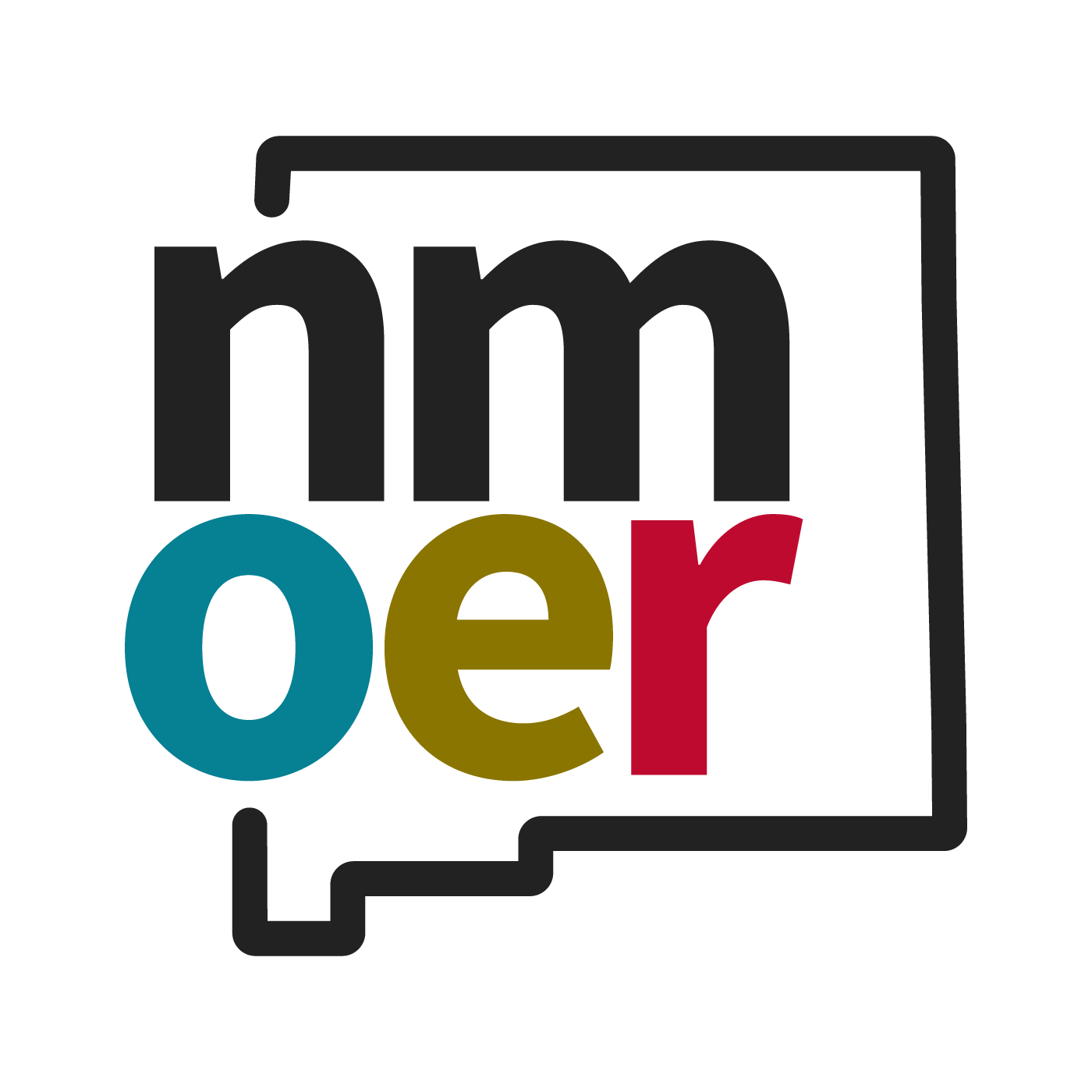Chapter 29: Leadership
Chapter Learning Objectives
- 29.1 Define leadership and distinguish it from management, including the key traits and behaviors that characterize effective leaders. (SLO 1, 2, 4, 5)
- 29.2 Identify various leadership styles and analyze their impact on team performance and workplace culture. (SLO 1, 2, 4, 5)
- 29.3 Apply leadership principles to real-world scenarios, including decision-making, conflict resolution, and guiding teams through change. (SLO 1, 2, 4, 5)

Some definitions consider leadership an act or behavior, such as initiating structure so group members know how to complete a task. Others consider a leader to be the center or nucleus of group activity, an instrument of goal achievement who has a certain personality, a form of persuasion and power, and the art of inducing compliance. Some look at leadership in terms of the management of group processes. This chapter will consider the behaviors and characteristics of leadership from different perspectives.
What is Leadership?
Leadership is frequently defined as a social (interpersonal) influence relationship between two or more persons who depend on each other to attain certain mutual goals in a group situation. Effective leadership helps individuals and groups achieve their goals by focusing on the group’s maintenance needs (the need for individuals to fit and work together by having, for example, shared norms) and task needs (the need for the group to make progress toward attaining the goal that brought them together).
A good leader:
- Develops a vision for the group
- Communicates that vision
- Orchestrates the group’s energy and activity toward goal attainment
- Turns a group of individuals into a team
- Transforms good intentions into positive actions
Leader versus Manager
The two dual concepts, leader and manager or leadership and management, are not interchangeable, nor are they redundant. The differences between the two can, however, be confusing. In many instances, to be a good manager one needs to be an effective leader. Many CEOs have been hired in the hope that their leadership skills, their ability to formulate a vision and get others to “buy into” that vision, will propel the organization forward. In addition, effective leadership often necessitates the ability to manage—to set goals; plan, devise, and implement strategy; make decisions and solve problems; and organize and control. For our purposes, the two sets of concepts can be contrasted in several ways.
First, we define the two concepts differently. In Management and Organizational Behavior, we defined management as a process consisting of planning, organizing, directing, and controlling. Here we define leadership as a social (interpersonal) influence relationship between two or more people who are dependent on each another for goal attainment.
Second, managers and leaders are commonly differentiated in terms of the processes through which they initially come to their position. Managers are generally appointed to their role. Even though many organizations appoint people to positions of leadership, leadership per se is a relationship that revolves around the followers’ acceptance or rejection of the leader. Thus, leaders often emerge out of events that unfold among members of a group.
Third, managers and leaders often differ in terms of the types and sources of the power they exercise. Managers commonly derive their power from the larger organization. Virtually all organizations legitimize the use of certain “carrots and sticks” (rewards and punishments) as ways of securing the compliance of their employees. In other words, by virtue of the position that a manager occupies (president, vice president, department head, supervisor), certain “rights to act” (schedule production, contract to sell a product, hire and fire) accompany the position and its place within the hierarchy of authority.

Leaders can also secure power and the ability to exercise influence using carrots and sticks; however, it is much more common for leaders to derive power from followers’ perception of their knowledge (expertise), their personality and attractiveness, and the working relationship that has developed between leaders and followers.
From the perspective of those who are under the leader’s and manager’s influence, the motivation to comply often has a different base. The subordinate to a manager frequently complies because of the role authority of the manager, and because of the carrots and sticks that managers have at their disposal. The followers of a leader comply because they want to. Thus, leaders motivate primarily through intrinsic processes, while managers motivate primarily through extrinsic processes.
Finally, it is important to note that while managers may be successful in directing and supervising their subordinates, they often succeed or fail because of their ability or inability to lead. As noted above, effective leadership often calls for the ability to manage, and effective management often requires leadership.
The Leadership Process
Leadership is a process, a complex and dynamic exchange relationship built over time between leader and follower and between leader and the group of followers who depend on each other to attain a mutually desired goal. There are several key components to this “working relationship”: the leader, the followers, the context (situation), the leadership process per se, and the consequences (outcomes).
Across time, each component interacts with and influences the other components, and whatever consequences (such as leader-follower trust) are created influence future interactions. As any one of the components changes, so too will leadership.
The Leader
Leaders are people who take charge of or guide the activities of others. They are often seen as the focus or orchestrater of group activity, the people who set the tone of the group so that it can move forward to attain its goals. Leaders provide the group with what is required to fulfill its maintenance and task-related needs. (Later in the chapter, we will return to the “leader as a person” as part of our discussion of the trait approach to leadership.)
Leadership Styles
Original section from Introduction to Sociology 2e
There are three different leadership styles: democratic, laissez-faire, and authoritarian.
Democratic leaders encourage group participation in all decision making. They work hard to build consensus before choosing a course of action and moving forward. This type of leader is particularly common, for example, in a club where the members vote on which activities or projects to pursue. Democratic leaders can be well liked, but there is often a danger that they will proceed slowly since consensus building is time-consuming. A further risk is that group members might pick sides and entrench themselves into opposing factions rather than reaching a solution.
In contrast, a laissez-faire leader (French for “leave it alone”) is hands-off, allowing group members to self-manage and make their own decisions. An example of this kind of leader might be an art teacher who opens the art cupboard, leaves materials on the shelves, and tells students to help themselves and make some art. While this style can work well with highly motivated and mature participants who have clear goals and guidelines, it risks group dissolution and a lack of progress.
As the name suggests, authoritarian leaders issue orders and assigns tasks. These leaders are clear instrumental leaders with a strong focus on meeting goals. Often, entrepreneurs fall into this mold, like Facebook founder Mark Zuckerberg. Not surprisingly, the authoritarian leader risks alienating the workers. There are times, however, when this style of leadership can be required. In different circumstances, each of these leadership styles can be effective and successful. Consider what leadership style you prefer.
The Context
Situations make demands on a group and its members, and not all situations are the same. Context refers to the situation that surrounds the leader and the followers. Situations are multidimensional. We discuss the context as it pertains to leadership in greater detail later in this chapter, but for now let’s look at it in terms of the task and task environment that confront the group. Is the task structured or unstructured?
Are the goals of the group clear or ambiguous? Is there agreement or disagreement about goals? Is there a body of knowledge that can guide task performance? Is the task boring? Frustrating? Intrinsically satisfying? Is the environment complex or simple, stable or unstable? These factors create different contexts within which leadership unfolds, and each factor places a different set of needs and demands on the leader and on the followers.

The process of leadership is separate and distinct from the leader (the person who occupies a central role in the group). The process is a complex, interactive, and dynamic working relationship between leader and followers. This working relationship, built over time, is directed toward fulfilling the group’s maintenance and task needs.
Part of the process consists of an exchange relationship between the leader and follower. The leader provides a resource directed toward fulfilling the group’s needs, and the group gives compliance, recognition, and esteem to the leader. To the extent that leadership is the exercise of influence, part of the leadership process is captured by the surrender of power by the followers and the exercise of influence over the followers by the leader. Thus, the leader influences the followers and the followers influence the leader, the context influences the leader and the followers, and both leader and followers influence the context.
The Consequences
A number of outcomes or consequences of the leadership process unfold between leader, follower, and situation. At the group level, two outcomes are important:
- Have the group’s maintenance needs been fulfilled?
- That is, do members of the group like and get along with one another, do they have a shared set of norms and values, and have they developed a good working relationship? Have individuals’ needs been fulfilled as reflected in attendance, motivation, performance, satisfaction, citizenship, trust, and maintenance of the group membership?
- Have the group’s task needs been met?
- That is, there are also important consequences of the leadership process for individuals: attendance, motivation, performance, satisfaction, citizenship, trust, and maintenance of their group membership.
The leader-member exchange (LMX) theory of the leadership process focuses attention on consequences associated with the leadership process. The theory views leadership as consisting of a number of dyadic relationships linking the leader with a follower.
A leader-follower relationship tends to develop quickly and remains relatively stable over time. The quality of the relationship is reflected by the degree of mutual trust, loyalty, support, respect, and obligation. High- and low-quality relationships between a leader and each of his followers produce in and out groups among the followers. Members of the in group come to be key players, and high-quality exchange relationships tend to be associated with higher levels of performance, commitment, and satisfaction than are low-quality exchange relationships.
The nature of the leadership process varies substantially depending on the leader, the followers, and the situation and context. Thus, leadership is the function of an interaction between the leader, the follower, and the context.
The leadership context for the leader of a group of assembly line production workers differs from the context for the leader of a self-managing production team and from the context confronted by the lead scientists in a research laboratory. The leadership tactics that work in the first context might fail miserably in the latter two.
Leader Emergence
Leaders hold a unique position in their groups, exercising influence and providing direction. Leonard Bernstein was part of the symphony, but his role as the New York Philharmonic conductor differed dramatically from that of the other symphony members. Besides conducting the orchestra, he created a vision for the symphony. In this capacity, leadership can be seen as a differentiated role and the nucleus of group activity.
Organizations have two kinds of leaders: formal and informal. A formal leader is that individual who is recognized by those outside the group as the official leader of the group. Often, the formal leader is appointed by the organization to serve in a formal capacity as an agent of the organization.
Jack Welch was the formal leader of General Electric, and Leonard Bernstein was the formal leader of the symphony. Practically all managers act as formal leaders as part of their assigned role. Organizations that use self-managed work teams allow members of the team to select the individual who will serve as their team leader. When this person’s role is sanctioned by the formal organization, these team leaders become formal leaders. Increasingly, leaders in organizations will be those who “best sell” their ideas on how to complete a project—persuasiveness and inspiration are important ingredients in the leadership equation, especially in high-involvement organizations.
Video: GE: From One to Three Companies
Watch this video about Jack Welch’s leadership at General Electric:
Informal leaders, by contrast, are not assigned by the organization. The informal leader is that individual whom members of the group acknowledge as their leader. Athletic teams often have informal leaders, individuals who exert considerable influence on team members even though they hold no official, formal leadership position. In fact, most work groups contain at least one informal leader. Just like formal leaders, informal leaders can benefit or harm an organization depending on whether their influence encourages group members to behave consistently with organizational goals.
As we have noted, the terms leader and manager are not synonymous. Informal leaders often have considerable leverage over their colleagues. Traditionally, the roles of informal leaders have not included the total set of management responsibilities because an informal leader does not always exercise the functions of planning, organizing, directing, and controlling. However, high-involvement organizations frequently encourage their formal and informal leaders to exercise the full set of management roles. Many consider such actions necessary for self-managing work teams to succeed. Informal leaders are acknowledged by the group, and the group willingly responds to their leadership.
Paths to Leadership
People come to leadership positions through two dynamics. In many instances, people are put into positions of leadership by forces outside the group. University-based ROTC programs and military academies (like West Point) formally groom people to be leaders for the military. We refer to this person as the designated leader (in this instance the designated and formal leader are the same person). Emergent leaders, on the other hand, arise from the dynamics and processes that unfold within and among a group of individuals as they endeavor to achieve a collective goal.

Many leaders emerge out of the needs of the situation. Different situations call for different configurations of knowledge, skills, and abilities. A group often turns to the member who possesses the knowledge, skills, and abilities that the group requires to achieve its goals. People surrender their power to individuals whom they believe will make meaningful contributions to attaining group goals. The individual to whom power is surrendered is often a member of the group who is in good standing. As a result of this member’s contributions to the group’s goals, he has accumulated idiosyncrasy credits (a form of competency-based status). These credits give the individual a status that allows him to influence the direction that the group takes as it works to achieve its goals.
It is important to recognize that the traits possessed by certain individuals contribute significantly to their emergence as leaders. Research indicates that people are unlikely to follow individuals who, for example, do not display drive, self-confidence, knowledge of the situation, honesty, and integrity.
Leadership as an Exercise of Influence
As we have noted, leadership is the exercise of influence over those who depend on one another for attaining a mutual goal in a group setting. But how do leaders effectively exercise this influence? Social or (interpersonal) influence is one’s ability to effect a change in the motivation, attitudes, and/or behaviors of others. Power, then, essentially answers the “how” question: How do leaders influence their followers? The answer often is that a leader’s social influence is the source of his power.
Not all forms of power are equally effective, nor is a leader’s total power base the simple sum of the powers at his disposal. Different types of power elicit different forms of compliance: Leaders who rely on coercive power often alienate followers who resist their influence attempts. Leaders who rely on reward power develop followers who are very measured in their responses to [what?]; the use of rewards often leads people to think in terms of “How much am I getting?” or “How much should I give?” or “Am I breaking even?” The use of referent power produces identification with the leader and his cause. The use of rationality, expert power, and/or moralistic appeal generally elicits commitment and the internalization of the leader’s goals.
Leaders who use referent and expert power commonly experience a favorable response in terms of follower satisfaction and performance. Research suggests that rationality is the most effective influence tactic in terms of its impact on follower commitment, motivation, performance, satisfaction, and group effectiveness.
Reward and legitimate power (that is, relying on one’s position to influence others) produce inconsistent results. Sometimes these powers lead to follower performance and satisfaction, yet they also sometimes fail. Coercive power can result in favorable performance, yet follower and resistance dissatisfaction are not uncommon.
Good leaders, whether formal or informal, develop many sources of power. Leaders who rely solely on their legitimate power and authority seldom generate the influence necessary to help their organization and its members succeed. In the process of building their power base, effective leaders have discovered that the use of coercive power tends to dilute the effectiveness of other powers, while the development and use of referent power tends to magnify the effectiveness of other forms of power. A compliment or reward from a person we like generally has greater value than one from someone we dislike, and punishment from someone we love (such as “tough love” from a parent) is less offensive than the pain inflicted by someone we dislike.
In sum, one key to effective leadership, especially as it pertains to the exercise of social and interpersonal influence, relates to the type of power employed by the leader. Overall leader effectiveness will be higher when people follow because they want to follow. This is much more likely to happen when the leader’s influence flows out of intrinsic such as rationality, expertise, moralistic appeal, and/or referent power.
Leadership is also about having a vision and communicating that vision to others in such a way that it provides meaning for the follower. Language, ritual, drama, myths, symbolic constructions, and stories are some of the tools leaders use to capture the attention of their “followers to be” to evoke emotion and to manage the meaning of the task (challenges) facing the group. These tools help the leader influence the attitudes, motivation, and behavior of their followers.
Transformational, Visionary, and Charismatic Leadership
Many organizations struggling with the need to manage chaos, to undergo a culture change, to empower organizational members, and to restructure have looked for answers in “hiring the right leader.” Many have come to believe that the transformational, visionary, and charismatic leader represents the style of leadership needed to move organizations through chaos.

Leaders who subscribe to the notion that “if it ain’t broke, don’t fix it” are often described as transactional leaders. They are extremely task oriented and instrumental in their approach, frequently looking for incentives that will induce their followers into a desired course of action. These reciprocal exchanges take place in the context of a mutually interdependent relationship between the leader and the follower, frequently resulting in interpersonal bonding. The transactional leader moves a group toward task accomplishment by initiating structure and by offering an incentive in exchange for desired behaviors.
The transformational leader, on the other hand, moves and changes (fixes) things “in a big way”! Unlike transactional leaders, they don’t cause change by offering inducements. Instead, they inspire others to action through their personal values, vision, passion, and belief in and commitment to the mission. Through charisma (idealized influence), individualized consideration (a focus on the development of the follower), intellectual stimulation (questioning assumptions and challenging the status quo), and/or inspirational motivation (articulating an appealing vision), transformational leaders move others to follow.
The transformational leader is also referred to as a visionary leader. Visionary leaders are those who influence others through an emotional and/or intellectual attraction to the leader’s dreams of what “can be.” Vision links a present and future state, energizes and generates commitment, provides meaning for action, and serves as a standard against which to assess performance. Evidence indicates that vision is positively related to follower attitudes and performance.
As people, transformational leaders are engaging. They are characterized by extroversion, agreeableness, and openness to experience. They energize others. They increase followers’ awareness of the importance of the designated outcome. They motivate individuals to transcend their own self-interest for the benefit of the team and inspire organizational members to self-manage (become self-leaders). Transformational leaders move people to focus on higher-order needs (self-esteem and self-actualization). When organizations face a turbulent environment, intense competition, products that may die early, and the need to move fast, managers cannot rely solely on organizational structure to guide organizational activity. In these situations, transformational leadership can motivate followers to be fully engaged and inspired, to internalize the goals and values of the organization, and to move forward with dogged determination!
Transformational leadership is positively related to follower satisfaction, performance, and acts of citizenship. These effects result from the fact that transformational leader behaviors elicit trust and perceptions of procedural justice, which in turn favorably impact follower satisfaction and performance. Trust and experiences of organizational justice promote leader effectiveness, follower satisfaction, motivation, performance, and citizenship behaviors.
It is difficult to differentiate the charismatic and the transformational leader. True transformational leaders may achieve their results through the magnetism of their personality. In this case, the two types of leaders are essentially one and the same, yet it is important to note that not all transformational leaders have a personal “aura.”
Charismatic leaders “single-handedly” effect changes even in very large organizations. Their personality is a powerful force, and the relationship that they forge with their followers is extremely strong. The charismatic leadership phenomenon involves a complex interplay between the attributes of the leader and followers’ needs, values, beliefs, and perceptions.
At its extreme, leader-follower relationships are characterized by followers’ unquestioning acceptance; trust in the leader’s beliefs; affection; willing obedience to, emulation of, and identification with the leader; emotional involvement with his mission; and feelings of self-efficacy directed toward the leader’s mission. Individuals working for charismatic leaders often have higher task performance, greater task satisfaction, and lower levels of role conflict than those working for leaders with considerate or structuring behaviors.
What are the characteristics of these people who can exert such a strong influence over their followers? Charismatic leaders have a strong need for power and the tendency to rely heavily on referent power as their primary power base. Charismatic leaders also are extremely self-confident and convinced of the rightness of their own beliefs and ideals. This self-confidence and strength of conviction make people trust the charismatic leader’s judgment, unconditionally following the leader’s mission and directives for action. The result is a strong bond between leader and followers, a bond built primarily around the leader’s personality.
Although there have been many effective charismatic leaders, those who succeed the most have coupled their charismatic capabilities with behaviors consistent with the same leadership principles followed by other effective leaders. Those who do not add these other dimensions still attract followers but do not meet organizational goals as effectively as they could. They are (at least for a time) the pied pipers of the business world, with lots of followers but no constructive direction.
Leadership Needs in the 21st Century
Frequent headlines in popular business magazines like Fortune and Business Week call our attention to a major movement going on in the world of business. Organizations are being reengineered and restructured, and network, virtual, and modular corporations are emerging. People talk about the transnational organization, the boundaryless company, the post-hierarchical organization. By the end of the decade, the organizations that we will be living in, working with, and competing against are likely to be vastly different from what we know today.
The transition will not be easy; uncertainty tends to breed resistance. We are driven by linear and rational thinking, which leads us to believe that “we can get there from here” by making some incremental changes in who we are and what we are currently doing. Existing paradigms frame our perceptions and guide our thinking. Throwing away paradigms that have served us well in the past does not come easily.
A look back tells most observers that the past decade has been characterized by rapid change, intense competition, an explosion of new technologies, chaos, turbulence, and high levels of uncertainty. A quick scan of today’s business landscape suggests that this trend is not going away anytime soon.

According to Professor Conger, two major forces are defining for us the genius of the next generation of leaders. The first force is the organization’s external environment. Global competitiveness is creating some unique leadership demands. The second force is the growing diversity in organizations’ internal environments. Diversity will significantly change the relationship between organizational members, work, and the organization in challenging, difficult, and also very positive ways.
What will the leaders of tomorrow be like? The effective leaders of the 21st century will have to be many things:
- They will have to be strategic opportunists
- Only organizational visionaries will find strategic opportunities before competitors.
- They will have to be globally aware
- With 80 percent of today’s organizations facing significant foreign competition, knowledge of foreign markets, global economics, and geopolitics is crucial.
- They will have to be capable of managing a highly decentralized organization
- Movement toward the high-involvement organization will accelerate as the environmental demands for organizational speed, flexibility, learning, and leanness increase.
- They will have to be interpersonally competent
- A highly diverse workforce will necessitate a leader who is extremely aware of and sensitive to multicultural expectations and needs.
- They will have to be builders of an organizational community
- Work and organizations will serve as a major source of need fulfillment, and in the process leaders will be called on to help build this community in such a way that organizational members develop a sense of ownership for the organization and its mission.
Leaders of the 21st-century organization have a monumental challenge awaiting them and a wealth of self-enriching and fulfilling opportunities. The challenge and rewards awaiting effective leaders are awesome!
Conclusion
Leadership is a primary vehicle for fulfilling the directing function of management. Because of its importance, theorists, researchers, and practitioners have devoted a tremendous amount of attention and energy to unlocking the secrets of effective leadership. They have kept at this search for perhaps a greater period of time than for any other single issue related to management.
How to cite this chapter:
Piercy, C. (2021). Chapter 29: Leadership. In Pouska, B. (Ed.), Business Professionalism. New Mexico Open Educational Resources Consortium Pressbooks. https://nmoer.pressbooks.pub/businessprofessionalism/
Licenses and Attributions
References
Bloomberg Television. (2023). GE: From one to three companies [Video]. YouTube. (Licensed under Standard YouTube License – All Rights Reserved.)
Original Chapter Source
Original chapter source: Adapted from Problem Solving in Teams and Groups by Cameron W. Piercy, PhD.

